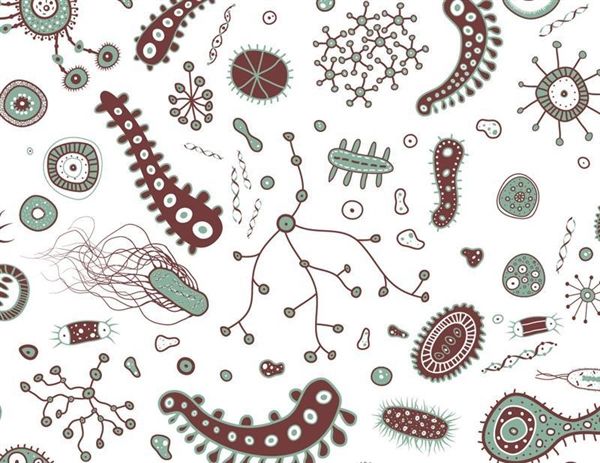(单词翻译:单击)
In 2001, a team from Tel Aviv University argued that B. permians were almost identical to a strain of modern bacteria, Bacillus marismortui, found in the Dead Sea. Only two of its genetic sequences differed, and then only slightly.
2001年,以色列特拉维夫大学的一个小组认为,二叠纪芽孢杆菌与一种现代的细菌几乎相同。那种细菌名叫原古孢杆菌,是在死海里发现的。两者之间只有两种基因顺序不同,而且也只是稍稍不同。
Are we to believe, the Israeli researchers wrote, "that in 250 million years B. permians has accumulated the same amount of genetic differences that could be achieved in just 3-7 days in the laboratory?" In reply, Vreeland suggested that "bacteria evolve faster in the lab than they do in the wild."
“我们该不该相信,”以色列研究人员写道,“二叠纪芽孢杆菌在2.5亿年里积累的基因变化之量,在实验室只要花3—7天时间就能守成?”弗里兰的回答是:“细菌在实验室里要比在野地里进化得快。”
Maybe.
也许如此。
It is a remarkable fact that well into the space age, most school textbooks divided the world of the living into just two categories—plant and animal. Microorganisms hardly featured. Amoebas and similar single-celled organisms were treated as proto-animals and algae as proto-plants. Bacteria were usually lumped in with plants, too, even though everyone knew they didn't belong there. As far back as the late nineteenth century the German naturalist Ernst Haeckel had suggested that bacteria deserved to be placed in a separate kingdom, which he called Monera, but the idea didn't begin to catch on among biologists until the 1960s and then only among some of them. (I note that my trusty American Heritage desk dictionary from 1969 doesn't recognize the term.)
直到空间时代,大多数学校的教材仍然把生物世界分为两类——植物和动物。这是不可思议的。微生物极少被置于显著地位。变形虫和类似的单细胞生物被看做是原始动物,海藻被看做是原始动物。细菌还常常与植物混在一起,尽管大家都知道细菌不是植物。早在19世纪末,德国博物学家厄恩斯特·海克尔已经提出,细菌应该归于一个单独的界,他把它称之炎“原核生物”。但是,直到20世纪60年代,那个观点才被生物学家们接受,而且也只是被有的生物学家接受。(我注意到,1969年出版的袖珍《美语词典》里没有承认这个名称。)


